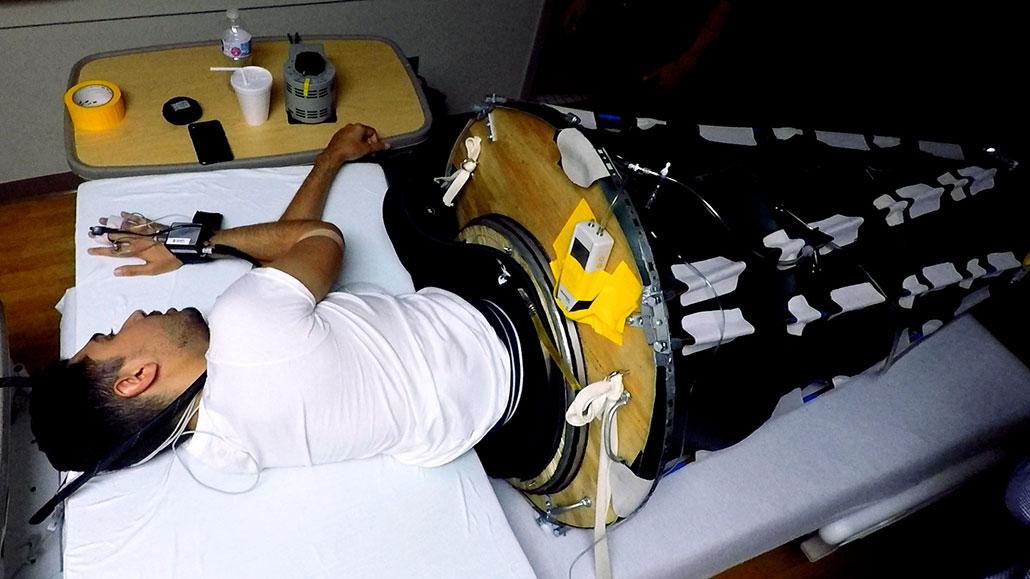Questions for ‘Here’s how a new sleeping bag could protect astronauts’ eyesight’

Study co-author James Leidner, a medical doctor, spent three nights in this high-tech sleeping bag. The invention eases pressure that can be caused by a fluid buildup behind the eyes. During long space flights, that pressure can lead to vision problems.
UT Southwestern Medical Center